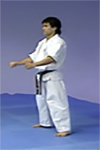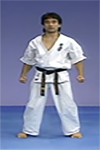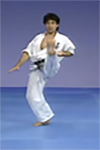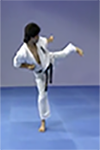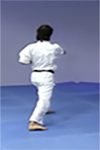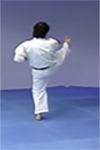Gekisai Sho - 最破小
These Kata were intended to make Karate more accessible for people to learn and the purpose was to teach strong and powerful movement combined with fluidity of motion and the utilization ofvarious techniques. Both
Gekisai Sho - 最破小
video
instructions
Video
source Youtube
Documentation
Kihon Waza
Dachi Waza
 Fudo Dachi
Fudo Dachi
 Mosubi Dachi
Mosubi Dachi
 Joi Dachi
Joi Dachi
 Heiko Dachi
Heiko Dachi
 Kokutsu Dachi
Kokutsu Dachi Zenkutsu Dachi
Zenkutsu Dachi
 Kiba Dachi
Kiba Dachi
 Kake Dachi
Kake Dachi
 Neko Ashi Dachi
Neko Ashi Dachi
Te Waza
 Seiken Chudan Gayaku Tsuki
Seiken Chudan Gayaku Tsuki
 Uraken Yoko Jodan Uchi
Uraken Yoko Jodan Uchi
 Seiken (Morote) Heiko Chudan Tsuki
Seiken (Morote) Heiko Chudan Tsuki
 Haito Chudan Uchi
Haito Chudan Uchi Chudan Ura Yonhon Nukite
Chudan Ura Yonhon Nukite
Uke Waza
 Seiken Uchi Uke
Seiken Uchi Uke
 Seiken Jodan Uke
Seiken Jodan Uke
 Seiken Gedan Barai
Seiken Gedan Barai
 Shuto Gedan Barai
Shuto Gedan Barai
 Shuto Mae Mawashi Uke
Shuto Mae Mawashi Uke
Geri Waza
 Jodan Yoko Geri
Jodan Yoko Geri
 Jodan Mae Geri
Jodan Mae Geri
Kihon Jutsugo
Kamae - 構え, means posture or base. Kamae is to be differentiated from the word Dachi - 立ち. Dachi refers to the position of the body from the waist down, Kamae refers to the posture of the entire body, as well as encompassing one's mental readiness.Kamae
Mokusō - 黙想, means meditation, part of the training of mushin; the call to meditate.Mokuso
Hajime - 始め, means begin.Hajime
Ibuki is karate’s hard breathing method. Ibuki breathing is a study of tension, which is necessary to truly understand relaxation. While ibuki breathing serves as a dynamic tension exercise, its true value is ki development, since it teaches the breathing control necessary for kiai. Ibuki breathing is performed in two ways, one long, and one short. Ibuki
Hikite - 引き手 means drawing hand: Hiku - 引き, to draw or pull, and Te - 手, the hand.Hikite
Ashi BaraiAshi Barai
KiaiKiai
Naore - 直れ, is a command to go back into the beginning Kamae.Naore
Yasumi - 休み, is a command to rest or relax.Yasume
